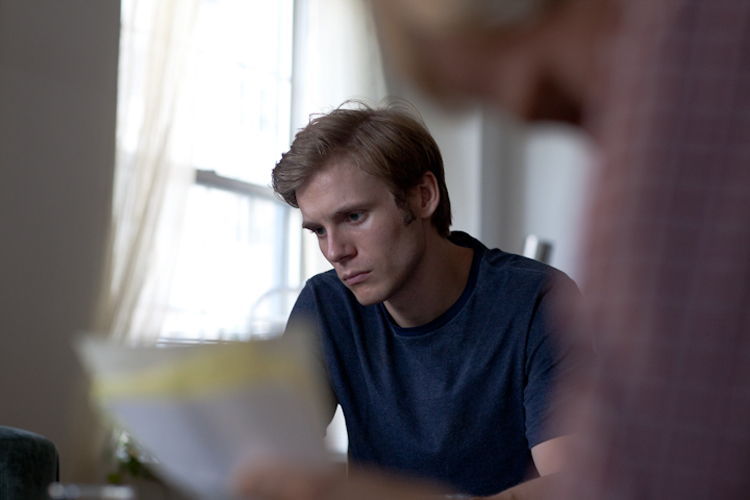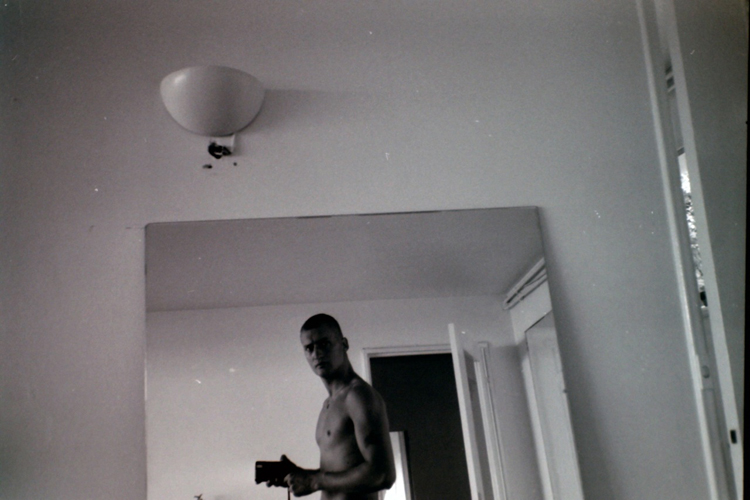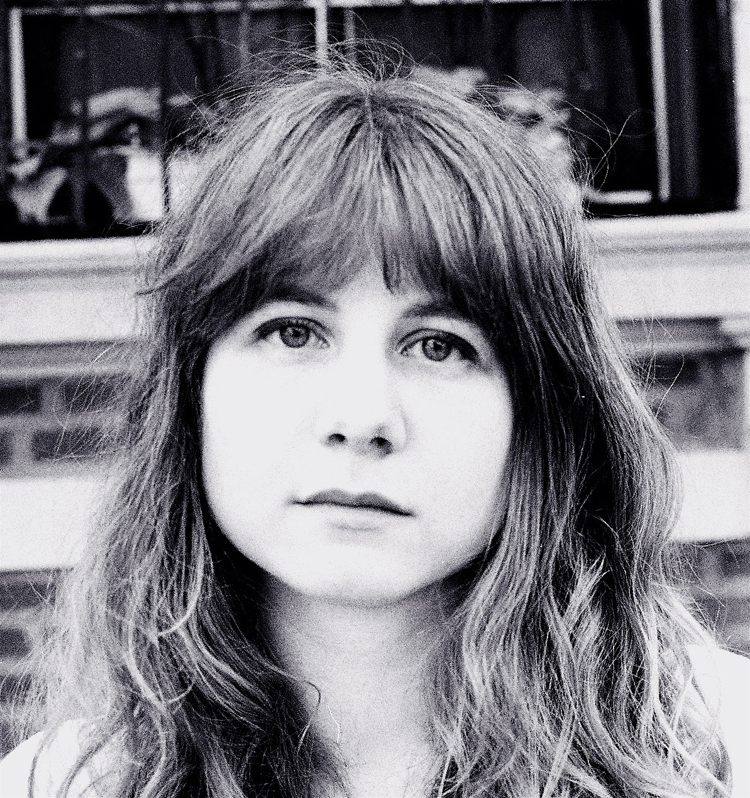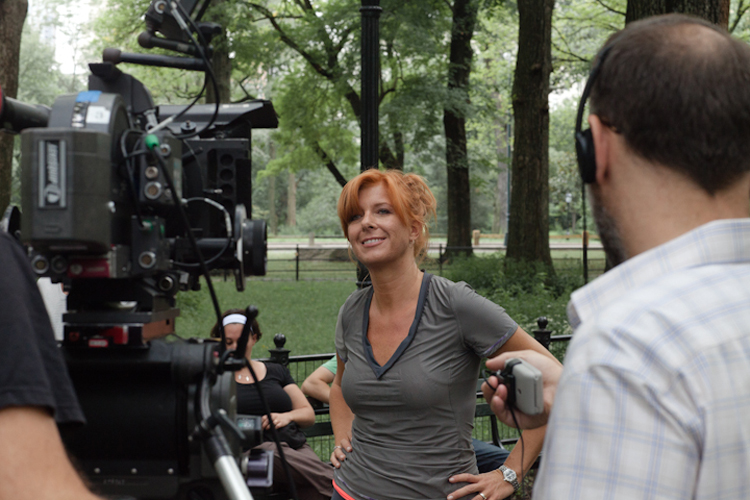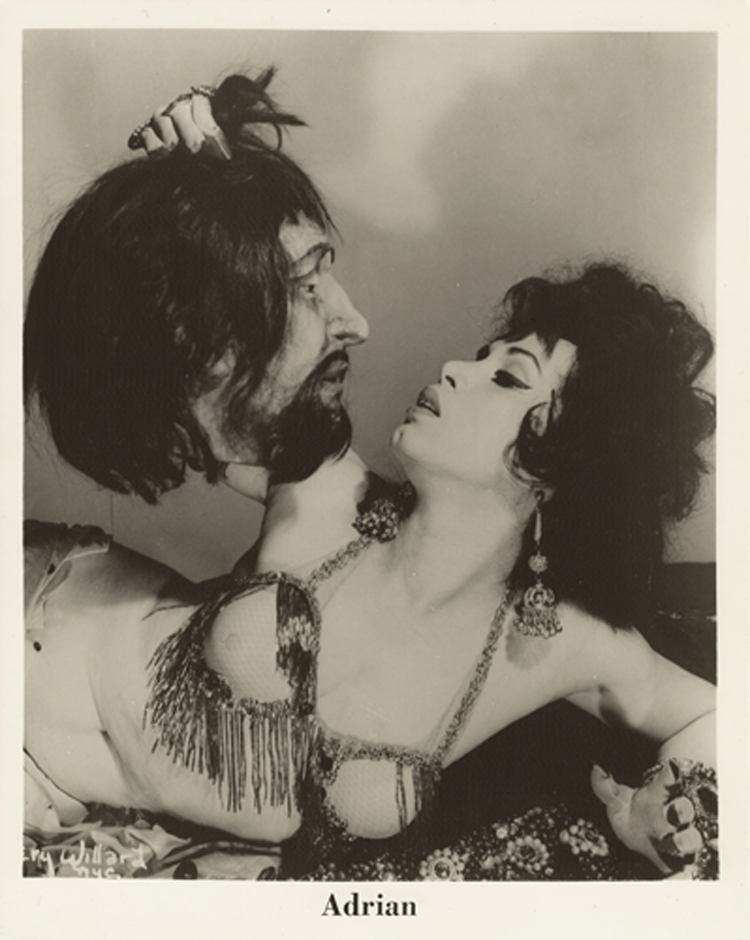The story of Salome, the femme fatale who danced for the head of John the Baptist, has long been a source of fascination to scholars and artists. When Henry Arango saw a production of Salome at the Metropolitan Opera House in 1965, his first thought was, “Hell, I could be Salome.” In those days, Arango was one of the bright stars of the legendary East Village underground drag nightclub the Club 82 after emigrating from Castro’s Cuba in 1956. Arango performed under the stage name “Adrian” and was always seeking inspiration for production numbers to entertain the highbrow crowds who would descend into the 4th Street lair (now the location of the Bijou Sex Theater) to watch the glamorous, show-stopping female impersonators. When the cast was booked into a show in Florida, Arango went to work on the Salome number and mentioned it to his friend, filmmaker Avery Willard. Willard thought the duo should make it into a film. Thus begat the one and only filmed collaboration between Arango and Willard, Salome and the Dance of the Seven Veils, a 10-minute color film that remained in Arango’s possession, unwatched until many, many years later when drag scholar Joe Jeffreys presented it for an admiring audience at one of his Drag Show Video Verite screenings. Director Ira Sachs and documentarian Cary Kehayan, who are working on In Search of Avery Willard, a documentary about the forgotten gay experimental filmmaker, headed to Arango’s home in Astoria to talk about the film, Arango’s friendship with Willard, and what it was like being a gay man in New York in the ’50s and ’60s.
Ira Sachs & Cary Kehayan: When were you born?
Adrian: I wasn’t born. I was created, because I’m a goddess.
But you left Cuba in ’56, right? How did you get from Cuba to Miami?
I had a friend of mine who actually was gay and who worked at the American Embassy. And I said, “I have to get out of here.” I was working at a nightclub called Montmartre. It was a beautiful penthouse club with a bar and an elevator that opened up into this huge space. But Castro, I think, uh—There were a couple of guys with machine guns and they wanted to kill a couple of people there, and they did, they killed a couple extra people who were there. So they closed the place.
Were you there every night?
There had never been a female impersonator. But they created a whole themed show about Madame du Barry. They made me a huge contraption with a powdered wig and all that. And they had a line of eight boys who actually gave me a hard time because they didn’t want to back-up a drag queen. Though there were no drag queens. They were called “impersonators.” But we did it. The show lasted a week because they killed these guys and then my friend said, “I think it’s time for you to leave.” Already I had an audition at the Club 82. Two friends of mine who were working there got me an audition. I arrived. Got the job. Met Avery Willard in the club—he was one of the customers—and we were friends for many years. More…



